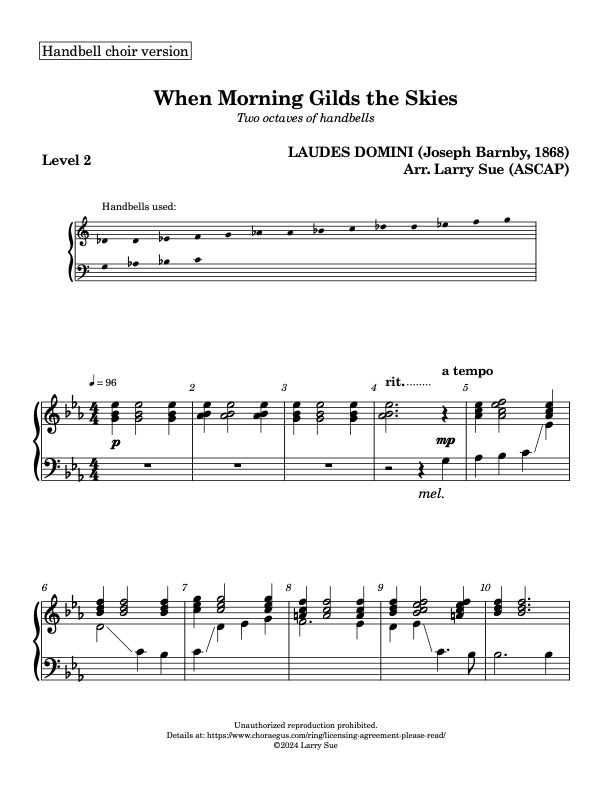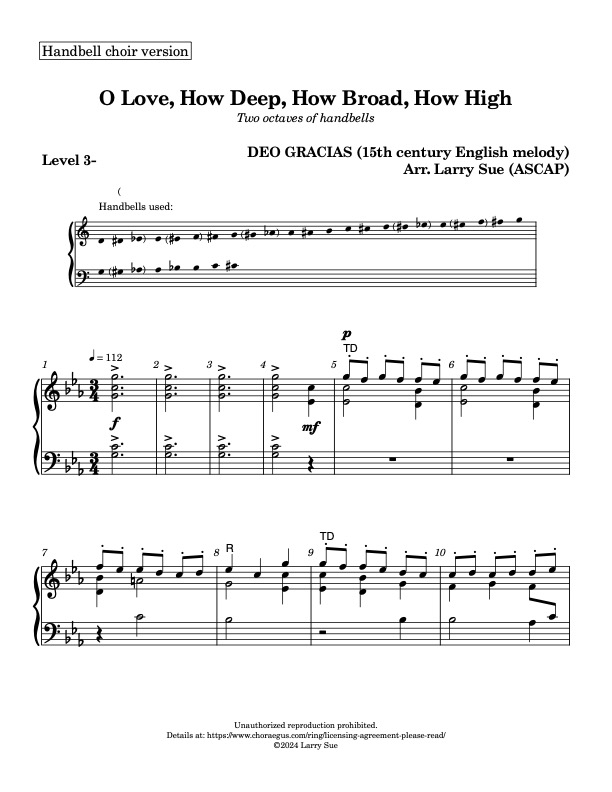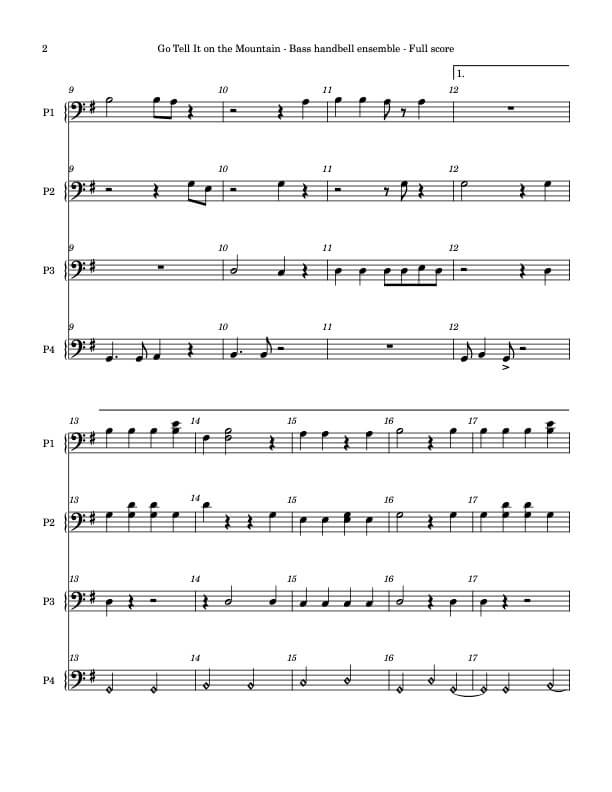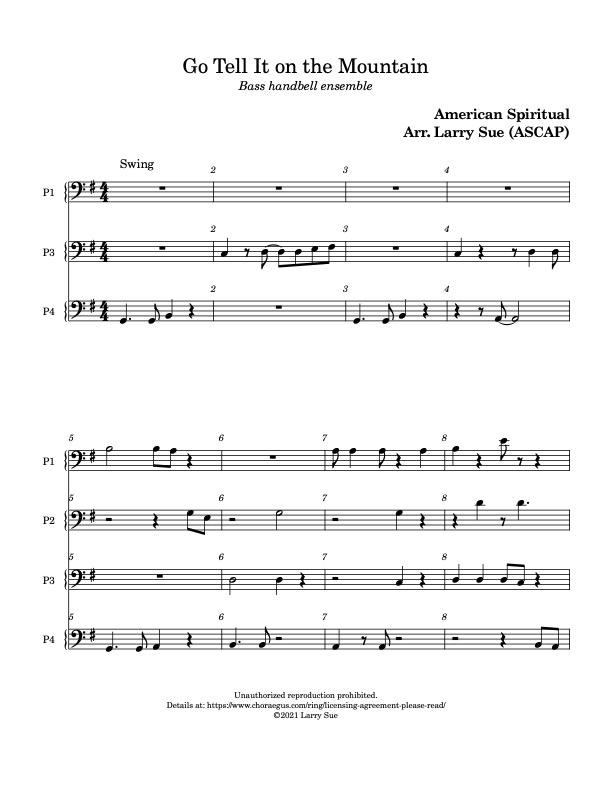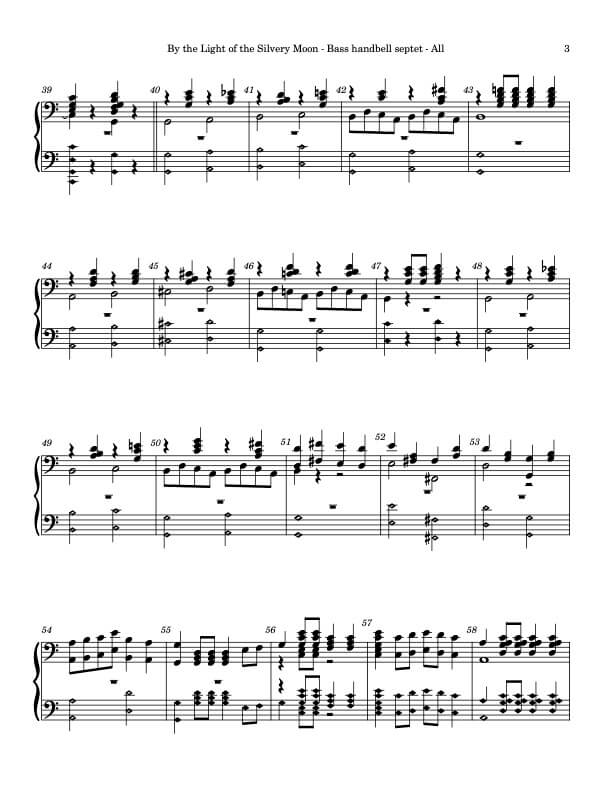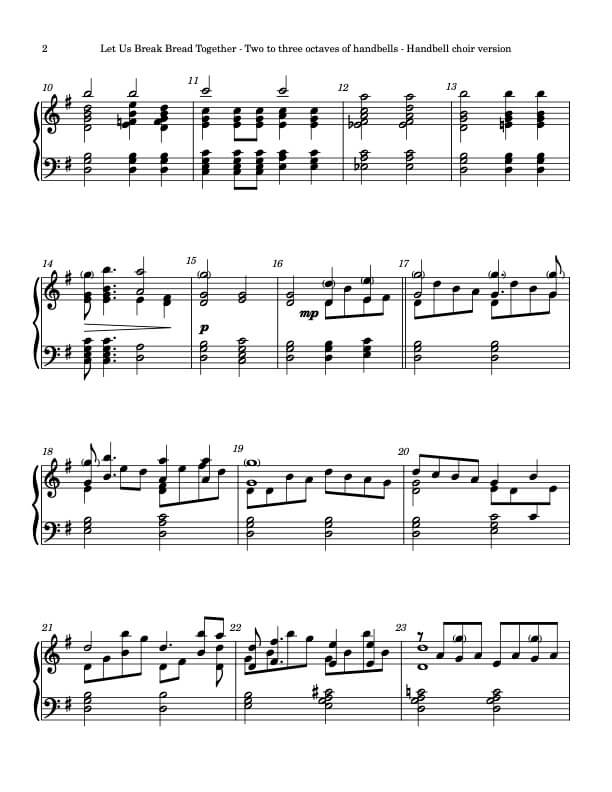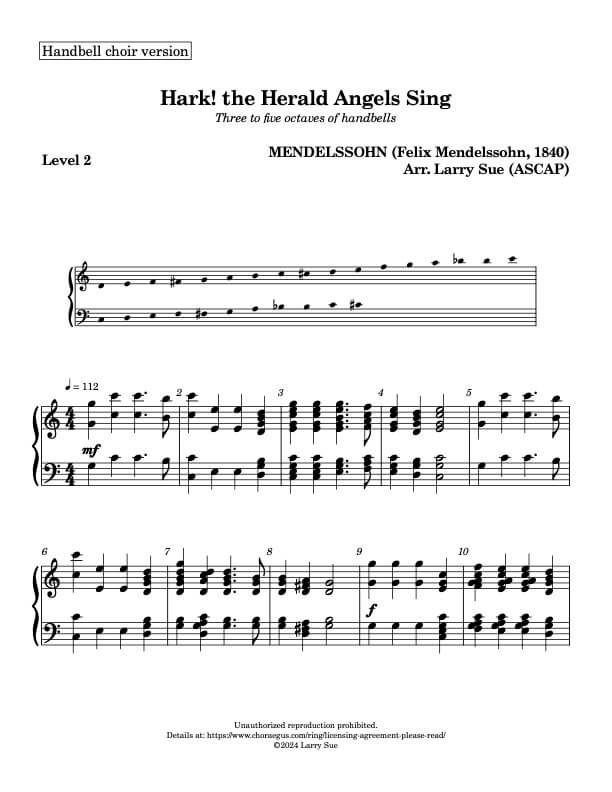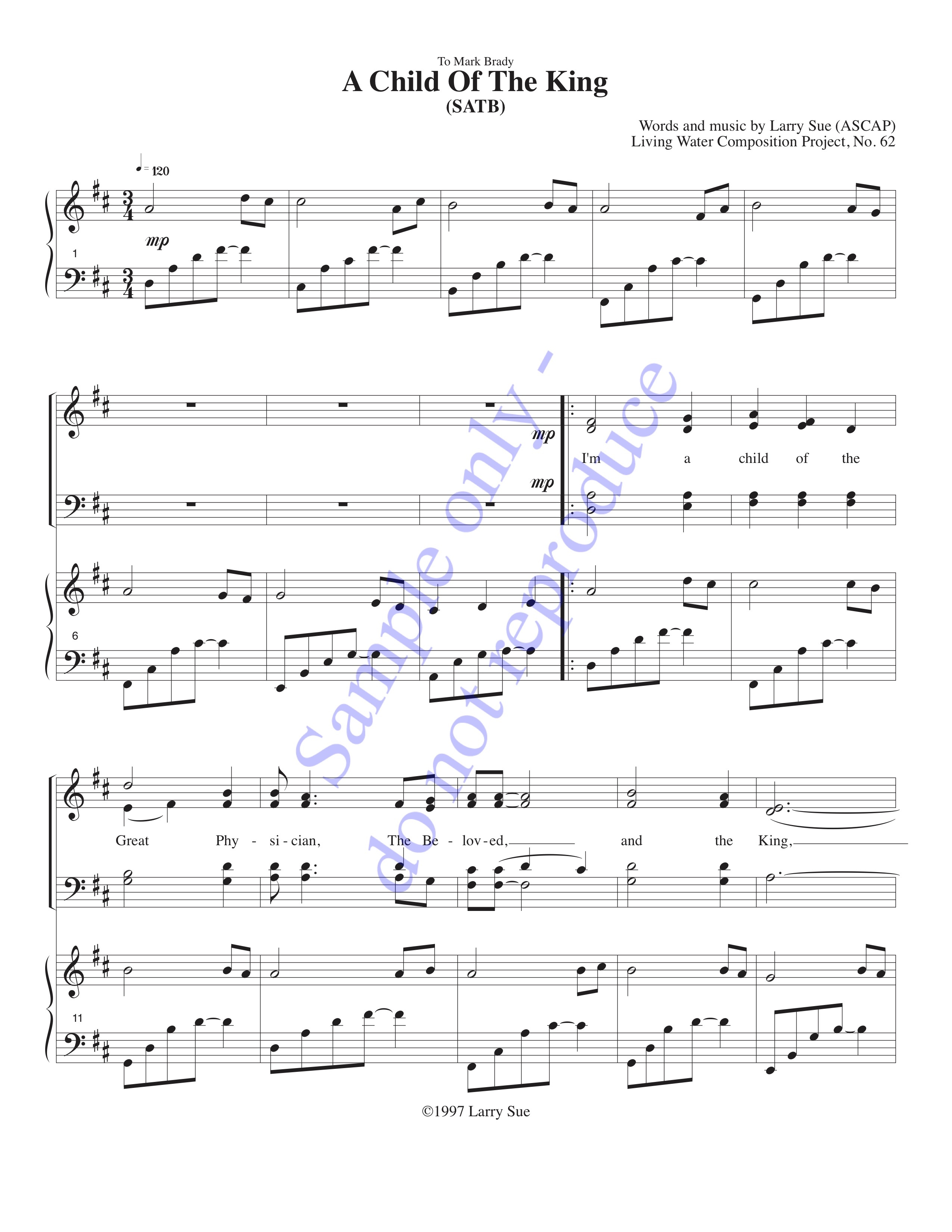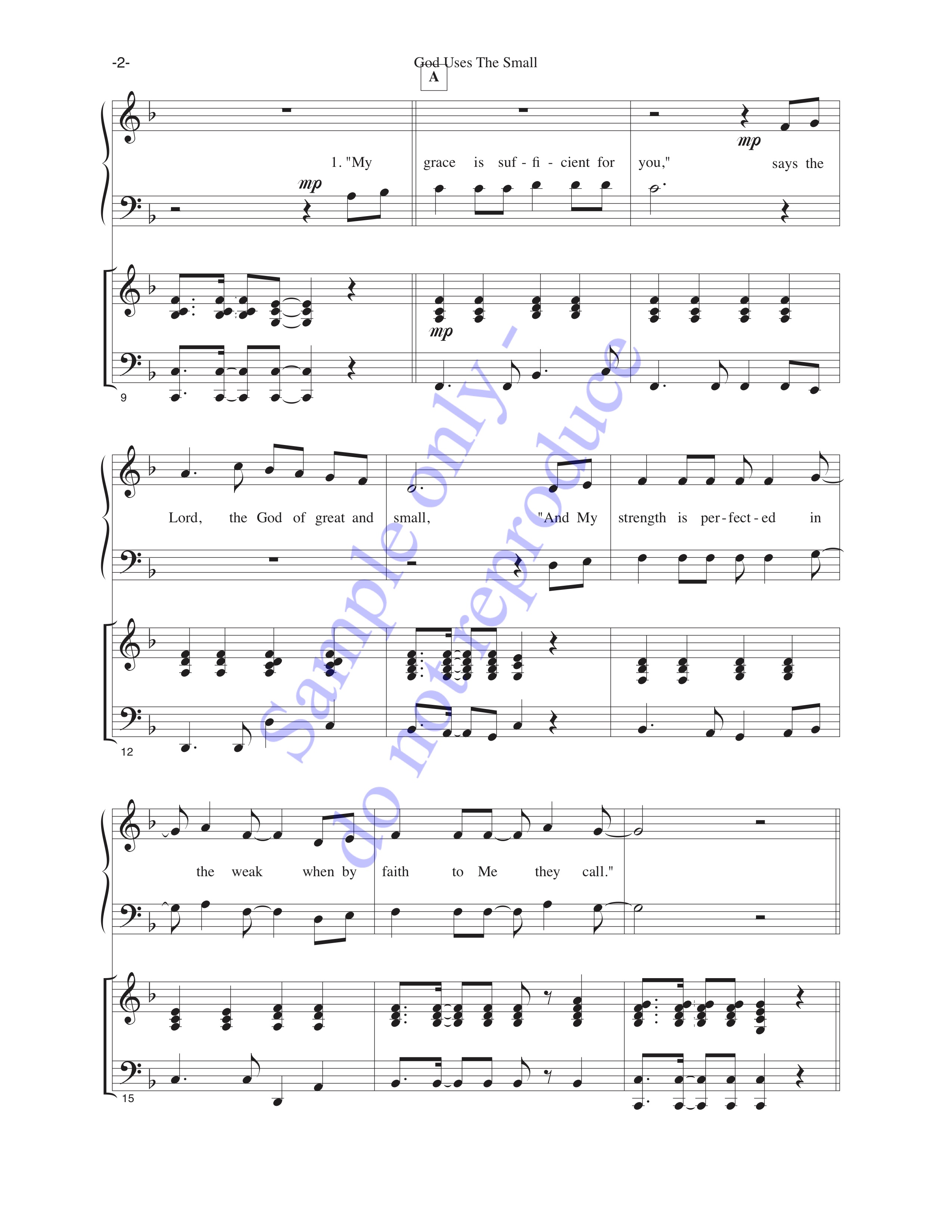Come, Thou Almighty King is a grand hymn about our need for the Lord to have our loyalty. The tune ITALIAN HYMN was written in 1769 by Felice de Giardini, who had a thoroughgoing musical career as a violinist and composer. Our arrangement for eight handbells provides excitement with a moderate technical challenge, so you and your listeners will both enjoy it.
Come, thou almighty King / help us thy name to sing / help us to praise.
Father, all glorious / o’er all victorious / come, and reign over us,
Ancient of Days.
Come, thou incarnate Word / gird on thy mighty sword / scatter thy foes.
Let thine almighty aid / our sure defense be made / our souls on thee be stayed;
Thy wonders show.
Come, holy Comforter / thy sacred witness bear / in this glad hour.
Thou who almighty art / now rule in every heart / and ne’er from us depart,
Spirit of power.
To thee, great One in Three / eternal praises be / hence evermore!
Thy sovereign majesty / may we in glory see / and to eternity
Love and adore.
Purchasing this 8-bell arrangement gives you permission to print and maintain up to four copies for your handbell group (plus the accompaniment/instrumental score(s), if part of the purchase) – so you only need to pay once. Purchase also gives permission for performance, broadcasting, live-streaming and video-sharing online. See our licensing agreement for full details, and please remember to mention the title and arranger of the piece on video-sharing sites, social media and any printed materials such as concert programs.
Find Larry and Carla on Facebook!


